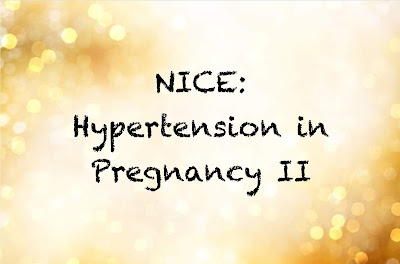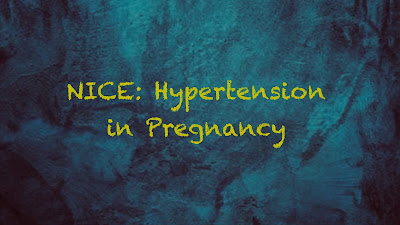This blogpost is Part #2 of summary of latest NICE guideline “NG 133: Hypertension in pregnancy: diagnosis and management released in June 2019. As this is a long guideline, so I planned to cover the topic in 2 posts.
This Post covers Fetal Monitoring, Intrapartum Care, Management in Critical Care, Post delivery, Drugs, Follow up and Next Pregnancy advice. This guideline has significant changes in recommendations. I have tried my best to extract all the important points.
You must go through the original guideline, which can be downloaded here: NG133
Let me know in comments if there are more points to be added.
Thanks
Hypertension in pregnancy: diagnosis and management
Fetal Monitoring
Chronic HTN
- Carry out USG for fetal growth & amniotic fluid volume assessment plus umbilical artery doppler at 28, 32 and 36 wks
- CTG → only if clinically indicated
Gestational HTN
- Carry out USG for fetal growth & amniotic fluid assessment plus umbilical artery doppler at diagnosis
- If normal → repeat if clinically indicated
- CTG → only of clinically indicated
Pre-eclampsia or severe gestational HTN
- CTG→ at diagnosis
- If conservative management, do ALL at diagnosis
- USG for fetal growth/amniotic fluid assessment
- Umbilical artery doppler
- If normal results→ do not routinely repeat CTG unless clinically indicated
- Repeat CTG → women reports change in fetal movements ; vaginal bleeding; abdominal pain; deterioration in maternal condition
- Repeat USG for fetal growth/amniotic fluid assessment or umblical artery Doppler velocimetry every 2 weeks (subsequent monitoring depend on these scans)
- Write a care plan including ALL
- Timing & nature of future fetal monitoring
- Fetal indications for birth / when to give corticosteroids
- Plans for discussions with neonatal pediatricians & obstetric anaesthetist




